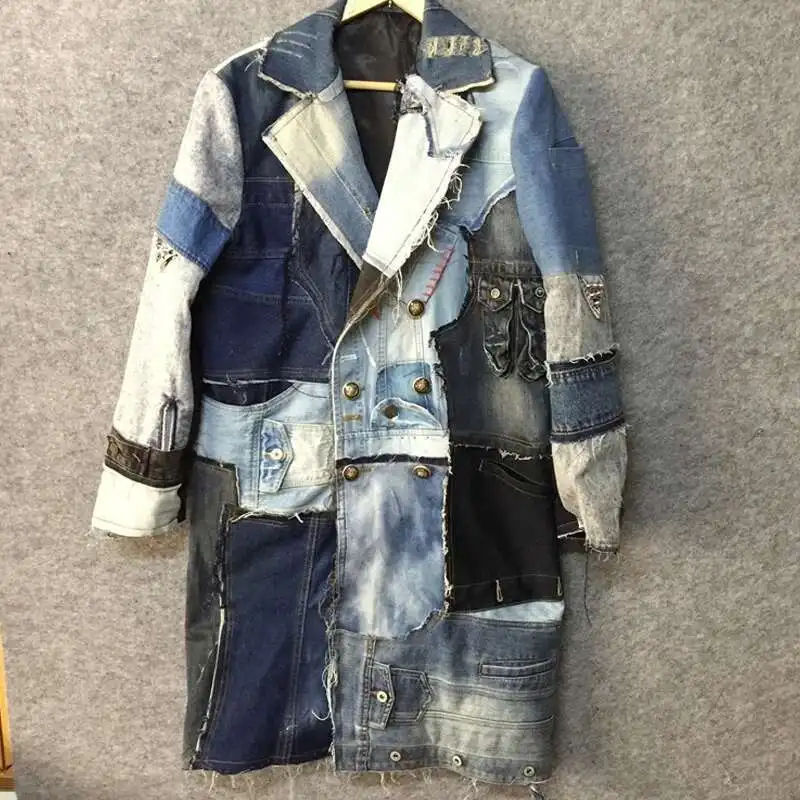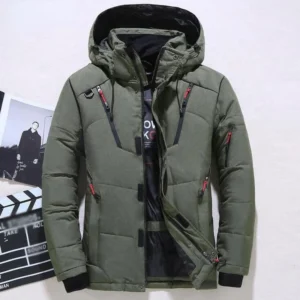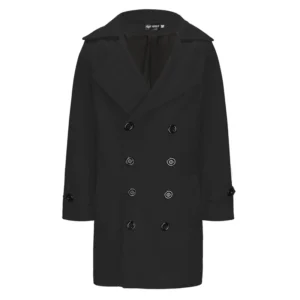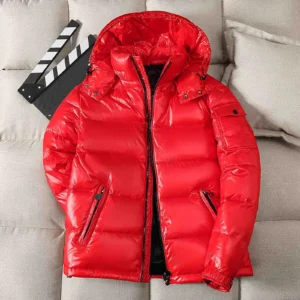Why Pea Coats Are the Ideal Choice for Winter Daily Wear
When winter arrives with its biting winds and dropping temperatures, finding the perfect outerwear becomes essential. Among the many options available, the pea coat stands out as a remarkable choice for everyday winter use. These classic coats offer an exceptional balance of warmth, style, and practicality that few other winter garments can match.
Originally designed for naval personnel navigating harsh sea conditions in the 1800s, pea coats have a rich heritage of functionality. This maritime background explains why these coats perform so admirably in winter conditions – they were literally created to protect sailors from some of the most challenging weather environments. The design elements that made them effective then continue to serve wearers well today:
- Double-breasted front that creates an extra layer of insulation across the chest
- Shorter length that allows for easy movement while still protecting vital areas
- Dense wool construction that naturally repels moisture and blocks wind
- High collar that can be turned up to protect the neck and lower face
What truly sets men’s pea coats apart is their remarkable versatility. Unlike specialized winter wear that might look out of place in certain settings, a well-fitted pea coat transitions seamlessly between casual weekend outings and professional environments. The timeless style also means your investment will remain fashionable for years to come, rather than becoming outdated after a single season.
The ideal coat length hits at the hip or just below, providing both warmth and freedom of movement – a crucial consideration for daily winter wear when you’re constantly transitioning between indoor and outdoor environments.
Essential Pea Coat Features That Deliver Superior Winter Performance
Wool Content and Fabric Quality: The Foundation of Warmth
At the core of every quality pea coat is its wool content – the single most important factor determining how well it will perform in winter conditions. Superior wool pea coats contain at least 80% wool, with premium options reaching 90-100% for maximum thermal performance.
Not all wool is created equal when it comes to winter protection:
- Melton wool: Dense and heavily felted, offering excellent wind resistance and durability
- Kersey wool: Slightly lighter with a diagonal weave that maintains warmth while reducing bulk
- Wool blends: Often incorporate small percentages of synthetic fibers (like nylon or polyester) to enhance durability and reduce wrinkling without significantly compromising warmth
The fabric weight, measured in ounces per square yard, directly correlates with warmth potential:
- 24 oz wool: Suitable for mild winter conditions (40-50°F / 4-10°C)
- 28-30 oz wool: Standard for average winter temperatures (30-40°F / -1 to 4°C)
- 32+ oz wool: Premium weight for colder climates (below 30°F / -1°C)
What makes wool particularly effective for everyday winter use is its natural breathability. Unlike synthetic materials that can cause overheating when moving between outdoor cold and heated indoor environments, wool naturally regulates temperature and wicks moisture. This quality becomes particularly important when considering if 100% wool coats are best for winter weather – the natural fiber’s ability to manage both insulation and breathability gives it a distinct advantage.
Strategic Lining: The Hidden Element of Cold Weather Comfort
While wool forms the protective outer shell, a quality winter pea coat’s lining plays an equally crucial role in daily comfort. The right lining enhances warmth without compromising mobility – essential for everyday wear.
The most common lining materials, ranked by increasing warmth:
- Satin or polyester: Provides basic comfort and ease of movement but minimal added insulation
- Quilted polyester: Creates small air pockets that trap body heat for improved warmth
- Flannel: Offers excellent warmth-to-weight ratio with a soft, comfortable feel
- Thinsulate: Premium synthetic insulation that delivers exceptional warmth with minimal bulk
For everyday winter use, the sleeve lining deserves special attention. Smooth materials like satin or polyester in the sleeves allow for effortless layering over sweaters or suit jackets, preventing the annoying “bunching” that can occur with textured sleeve linings.
An often-overlooked detail is the lining’s attachment method. Fully attached linings provide consistent warmth but may reduce breathability, while partially floating linings (attached at seams but not throughout) allow better air circulation and movement during active daily wear.
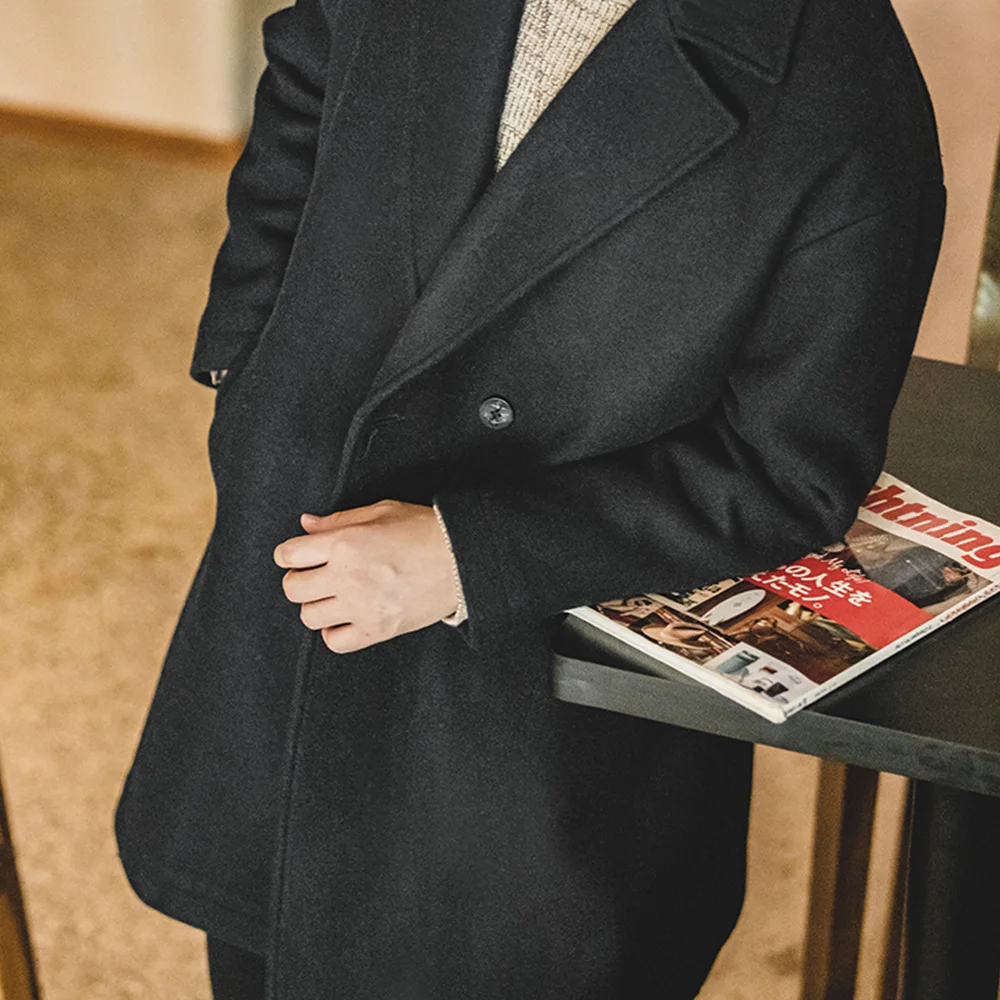
Construction Details That Ensure Everyday Durability
The double-breasted design of traditional pea coats isn’t just about aesthetics – it’s a functional feature that creates an overlapping barrier against wind and cold. This overlapping front panel essentially doubles the insulation across your chest, where core warmth is most critical.
Key construction elements that separate quality pea coats from inferior versions:
- Reinforced stitching at stress points like underarms, pockets, and button attachments to prevent tearing during daily use
- Button quality and attachment – authentic horn or high-density plastic buttons secured with anchored cross-stitching or shank construction to prevent popping off
- Collar construction – properly interfaced collars maintain their shape when turned up against wind (Ulster style provides more neck coverage than notched varieties)
- Pocket placement – positioned to naturally warm hands while maintaining a clean silhouette
The best pea coats feature internal structure elements like chest canvas or interfacing that help the coat maintain its shape through repeated wear. These hidden components prevent the sagging and distortion that can occur in cheaper coats, ensuring your investment continues to look sharp throughout the winter and beyond.
Weather Resistance: How Pea Coats Handle Winter Elements
While not designed as technical outerwear, quality pea coats offer surprising resilience against winter weather. The tightly woven wool creates a naturally wind-resistant barrier that blocks cold air from penetrating to your body. The dense structure of traditional pea coat wool actually becomes more effective as wind speed increases, unlike some synthetic materials.
Wool’s natural water resistance comes from lanolin, the waxy substance present in sheep’s wool. This gives pea coats the ability to handle light precipitation – snowflakes will initially rest on the surface rather than immediately soaking through. However, this protection has limits; during heavy or prolonged precipitation, moisture will eventually penetrate unless the wool has been treated with additional water-repellent finishes.
For extreme winter conditions, pea coats show their naval heritage in the collar design. When fully turned up, the collar creates protection for the lower face and neck, exactly as it did for sailors facing ocean spray and winds. This feature distinguishes pea coats from many other warm men’s coats for extreme cold which might offer more insulation but less versatile styling.
Finding Your Perfect Winter Pea Coat: A Comprehensive Buying Guide
Mastering Pea Coat Fit for Maximum Comfort and Style
The difference between a pea coat that merely keeps you warm and one that becomes a winter staple lies largely in the fit. Proper fit ensures both comfort and performance during everyday winter activities.
Follow these guidelines for ideal pea coat fit:
- Shoulders: The seam should sit directly at your shoulder’s edge – not drooping over or cutting in before your natural shoulder ends
- Chest: When buttoned, you should be able to fit a fist between your chest and the fabric for comfortable layering
- Sleeves: Should end at your wrist bone when arms hang naturally, allowing about ¼-½ inch (0.6-1.3 cm) of shirt cuff to show
- Body: The silhouette should follow your natural shape without excessive pulling or excess fabric
Traditional pea coats feature a slightly boxier cut to accommodate layers underneath, while modern interpretations often adopt a more tailored silhouette. Consider your typical winter wardrobe when choosing between these styles – if you regularly wear heavy sweaters or suits, the traditional cut may offer necessary room.
Proper coat length is critical for both warmth and movement. Authentic pea coats hit at hip level (typically covering the seat partially) – a deliberate design choice that allows free movement while protecting vital core areas. Some contemporary variations extend slightly longer, but beware of versions that fall much below the hip, as these sacrifice the pea coat’s distinctive mobility advantage.
Essential Features Checklist for Daily Winter Performance
When evaluating potential pea coats for everyday winter use, prioritize these key features:
- Wool content: Minimum 80% wool for adequate warmth (higher is better)
- Weight: Fabric should feel substantial (ideally 24-32 oz depending on your climate)
- Lining: Full lining with insulating properties in the body, smooth material in sleeves
- Pocket depth: Hand-warmer pockets should be at least 7 inches (17.8 cm) deep for practical use
- Interior pocket(s): At least one secure inside pocket for valuables
- Double-breasted closure: Authentic 6-8 button front with proper overlap
- Collar design: Substantial enough to stay up when raised against wind
- Button security: No wobbling or looseness when gently tugged
Additional features that enhance everyday usability include wind flaps behind button closures, reinforced pocket openings, and throat latches that can secure the collar when fully closed. The coat’s overall weight should feel substantial without being restrictive – a quality pea coat typically weighs between 4-5 pounds (1.8-2.3 kg), with heavier versions offering more insulation.
Color Selection for Maximum Versatility
The color of your pea coat significantly impacts its versatility for everyday winter wear. While personal preference matters, certain colors offer practical advantages:
- Navy: The traditional and most versatile choice, navy flatters most skin tones and pairs easily with both casual and formal attire
- Black: Urban-appropriate with a slightly more formal appearance, shows less visible soiling but can highlight dandruff or lint
- Charcoal: Modern alternative that hides daily wear and tear better than black while maintaining versatility
- Camel/Tan: Distinctive option that pairs beautifully with dark winter wardrobes but shows soil more readily
For daily winter use, darker colors generally offer more practicality as they hide the inevitable spots and splashes encountered during regular wear. The choice between short vs. long coats also affects color selection – shorter pea coats in bold colors make stronger style statements than their longer counterparts.
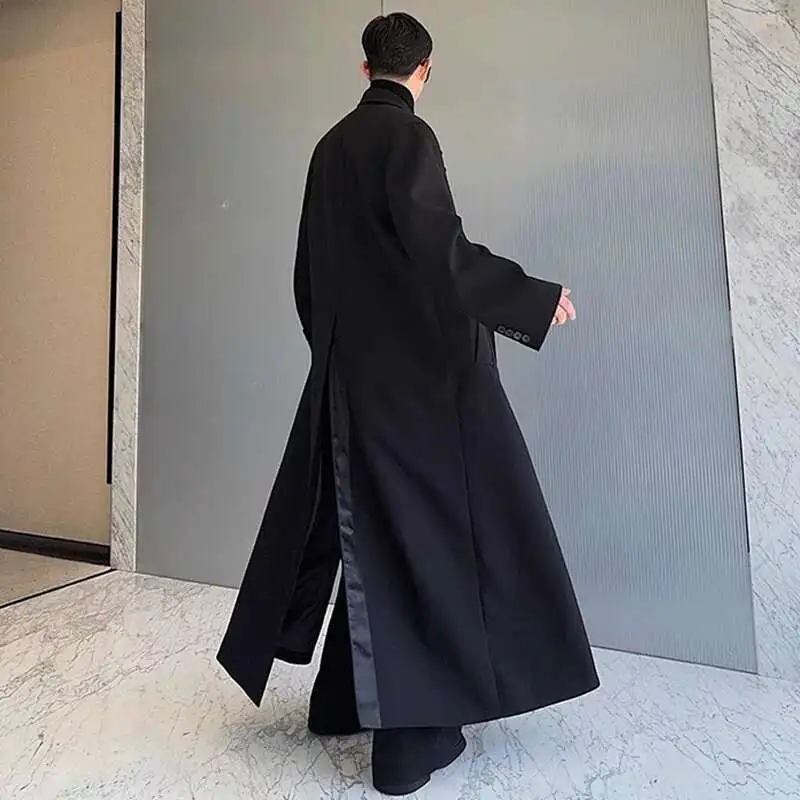
Identifying Quality Construction When Shopping
Quality indicators to verify when examining potential pea coats:
- Seams: Look for tight, even stitching with no puckering or loose threads
- Buttonholes: Should be cleanly finished with dense stitching and no fraying
- Pattern matching: On patterned fabrics, check that patterns align at seams
- Interior finishing: Clean edges with no raw seams visible
- Weight distribution: Coat should hang evenly when held by the collar
- Label details: Look for specific wool percentage rather than just “wool blend”
A quality pea coat represents a significant investment, with prices typically ranging from $150-$400 for good quality options, and premium versions exceeding $500. However, the price-to-quality relationship isn’t strictly linear – coats in the $200-$300 range often represent the sweet spot of quality and value for everyday winter wear.
Mens Heavy Winter Coat, Mens Insulated Coat, Mens Parka Coat
Price range: $175.52 through $237.36 Select options This product has multiple variants. The options may be chosen on the product pageMens Big and Tall Winter Coats, Mens Down Coat, Mens Hooded Winter Coat, Mens Puffer Coat
Price range: $126.44 through $217.01 Select options This product has multiple variants. The options may be chosen on the product pageMens Big and Tall Winter Coats, Mens Hooded Winter Coat
Price range: $80.32 through $106.68 Select options This product has multiple variants. The options may be chosen on the product pageMens Double Breasted Pea Coat, Mens Wool Blend Coat, Mens Wool Pea Coat
Price range: $136.84 through $157.36 Select options This product has multiple variants. The options may be chosen on the product pageMens Cashmere Overcoat, Mens Hooded Winter Coat, Mens Wool Blend Coat
Price range: $128.72 through $139.68 Select options This product has multiple variants. The options may be chosen on the product pageMens Hooded Winter Coat, Mens Insulated Coat, Mens Puffer Coat, Mens Quilted Coat
Price range: $139.88 through $177.72 Select options This product has multiple variants. The options may be chosen on the product page
Pea Coats vs. Alternative Winter Coats: Making the Right Choice
Comparing Warmth, Style and Functionality Across Winter Coat Types
When considering your winter wardrobe, understanding how pea coats compare to other winter coat options helps identify the best choice for your specific needs.
| Coat Type | Temperature Range | Weather Protection | Formality Range | Weight | Mobility |
|---|---|---|---|---|---|
| Pea Coat | 25-45°F (-4 to 7°C) | Moderate wind resistance, light precipitation | Casual to semi-formal | Medium (3-5 lbs/1.4-2.3 kg) | Excellent |
| Parka | -10 to 30°F (-23 to -1°C) | Superior wind/water resistance | Casual only | Heavy (5-7 lbs/2.3-3.2 kg) | Good |
| Overcoat | 20-40°F (-6 to 4°C) | Moderate wind resistance, poor precipitation protection | Business casual to formal | Heavy (4-6 lbs/1.8-2.7 kg) | Moderate |
| Trench Coat | 40-60°F (4 to 16°C) | Excellent rain protection, poor insulation | Business casual to formal | Light (2-3 lbs/0.9-1.4 kg) | Excellent |
| Duffle Coat | 25-40°F (-4 to 4°C) | Good wind resistance, moderate precipitation protection | Casual to business casual | Medium-Heavy (4-5 lbs/1.8-2.3 kg) | Good |
Pea coats occupy a unique middle ground in the spectrum of winter outerwear. Unlike parkas, which excel in extreme conditions but look out of place in professional settings, or wool overcoats that offer formal elegance but sometimes restricted movement, pea coats deliver remarkable versatility.
Where pea coats particularly shine is in transitional scenarios – moving between indoor and outdoor environments frequently throughout the day. Their moderately heavy construction provides substantial warmth without causing overheating when entering heated buildings, while their classic styling ensures you remain presentable regardless of context.
For temperatures below approximately 25°F (-4°C), pea coats may require strategic layering to maintain comfort. A heavy sweater, scarf, and possibly thermal underwear can extend the pea coat’s effective temperature range considerably.
Styling Your Pea Coat for Everyday Winter Scenarios
Creating Versatile Winter Outfits Around Your Pea Coat
The exceptional versatility of pea coats makes them ideal anchors for a variety of winter outfits across different dress codes and occasions.
Casual Weekend Look:
* Navy pea coat + gray crew neck sweater + dark jeans + leather boots
* Add a colorful scarf for visual interest and additional neck warmth
* Complete with leather gloves and a simple knit hat when temperatures drop
Business Casual Office:
* Charcoal pea coat + light blue button-down shirt + navy chinos + brown derby shoes
* Layer with a quarter-zip pullover or lightweight vest for additional warmth without bulk
* A patterned scarf adds personality while maintaining professional appearance
Smart Evening Attire:
* Black pea coat + charcoal turtleneck sweater + black trousers + Chelsea boots
* Minimalist approach creates a sleek silhouette perfect for evening engagements
* Consider a cashmere scarf in burgundy or forest green for subtle sophistication
Effective layering becomes crucial for maximizing your pea coat’s performance in fluctuating temperatures. The ideal approach follows a three-layer system:
- Base layer: Moisture-wicking material like merino wool or technical fabric
- Insulating layer: Sweaters, vests, or lightweight jackets that trap warm air
- Shell layer: Your pea coat, providing wind resistance and general weather protection
The key advantage of pea coats is their accommodation of these layers without creating the “stuffed” appearance that can occur with more fitted coat styles.
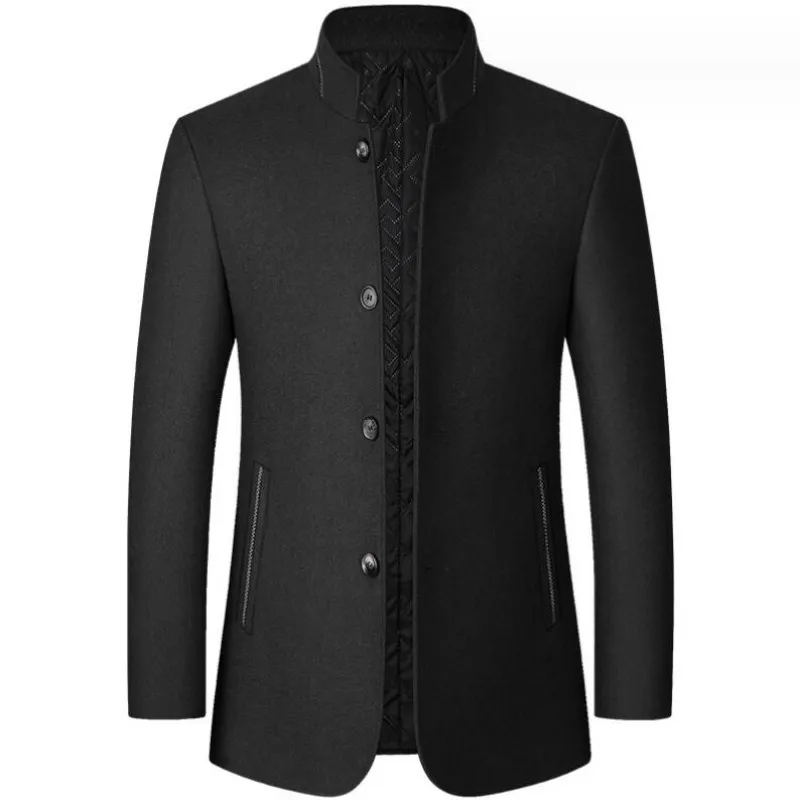
Maintaining Your Pea Coat for Years of Winter Use
Essential Care for Wool Pea Coats
With proper care, a quality pea coat can remain a winter staple for decades. Follow these maintenance practices to maximize your investment:
Regular Cleaning:
1. Brush after each wearing with a soft clothes brush to remove surface dirt and debris
2. Spot clean small stains immediately using a damp cloth and mild soap
3. Professional dry cleaning only when necessary (typically once per season)
4. Always air thoroughly after wearing in wet conditions before storing
Proper Storage:
1. Use a sturdy, shaped hanger that supports the shoulders
2. Button the coat when hanging to maintain proper shape
3. Allow adequate space in your closet for air circulation
4. During off-season storage, use a breathable garment bag (not plastic)
5. Consider cedar blocks or lavender sachets as natural moth deterrents
Addressing Common Issues:
* Pilling: Remove gently with a fabric shaver or sweater stone
* Button security: Reinforce loose buttons immediately before they detach
* Salt stains: Diluted white vinegar solution applied with a clean cloth
* Wet wool smell: Thorough air drying away from direct heat sources
Avoid the common mistake of over-cleaning wool coats, which can strip natural oils and reduce both softness and water-resistant properties. Instead, focus on regular brushing and proper airing between wearings.
Answering Common Questions About Pea Coats for Winter Use
Expert Responses to Frequent Pea Coat Inquiries
Are pea coats warm enough for very cold winters?
Pea coats provide adequate warmth for temperatures down to approximately 25°F (-4°C) on their own. For colder conditions, strategic layering becomes essential. The dense wool construction excels at blocking wind—often the most significant factor in winter chill—but may need supplementation in extremely cold environments or during prolonged outdoor exposure.
How do pea coats perform in rain and snow?
Traditional wool pea coats offer natural water resistance that handles light precipitation well. The tight weave and lanolin content cause water droplets to bead initially rather than immediately soaking through. However, this protection has limits—in heavy or prolonged rain, moisture will eventually penetrate. For snowy conditions, pea coats perform admirably as the cold precipitation tends to brush off easily before melting. Some modern pea coats incorporate treatment for enhanced water resistance.
What’s the ideal price range for a quality pea coat?
The sweet spot for quality pea coats typically falls between $200-$350. In this range, you can reasonably expect high wool content (80%+), quality construction, and proper lining. Below $150, compromises in material composition and construction become common. Above $400, you’re often paying for designer labels or incremental quality improvements that may not significantly impact everyday performance.
How should I layer under a pea coat in extreme cold?
Effective layering starts with a moisture-wicking base layer (merino wool or technical fabric), followed by an insulating mid-layer such as a wool sweater or lightweight down vest. For extreme conditions, consider a thin packable down jacket as your mid-layer before adding the pea coat as your outer shell. Focus particular attention on extremities—a substantial scarf, insulated gloves, and appropriate headwear dramatically improve overall warmth perception.
What makes men’s and women’s pea coats different?
While sharing the same fundamental design elements, women’s pea coats typically feature more tailored waists, slightly different button placement (right over left vs. left over right for men), and occasionally decorative details like princess seams or belt options. Women’s versions sometimes offer more color varieties, while men’s styles tend to adhere more strictly to traditional naval-inspired designs and neutral colors.
Is a Pea Coat Right for Your Winter Needs?
The ideal winter coat represents a significant investment that should align with your specific lifestyle, climate, and aesthetic preferences. Pea coats excel as versatile performers that balance classic style with genuine functionality—a rare combination in outerwear.
For those living in moderate winter climates with temperatures typically remaining above 20°F (-7°C), a quality pea coat can serve as your primary winter garment. The classic styling ensures relevance across various social and professional contexts, while the practical design addresses genuine winter challenges.
In more severe climates, a pea coat may serve best as part of a broader winter wardrobe, complementing specialized technical outerwear for extreme conditions. The pea coat’s ability to transition seamlessly between casual and more formal occasions makes it an invaluable companion even when it’s not your coldest-weather option.
What truly distinguishes pea coats from other winter investments is their remarkable longevity—both physically and stylistically. While fashion trends come and go, the fundamental design of pea coats has remained relevant for over a century, suggesting your investment today will continue serving you well for many winters to come.

